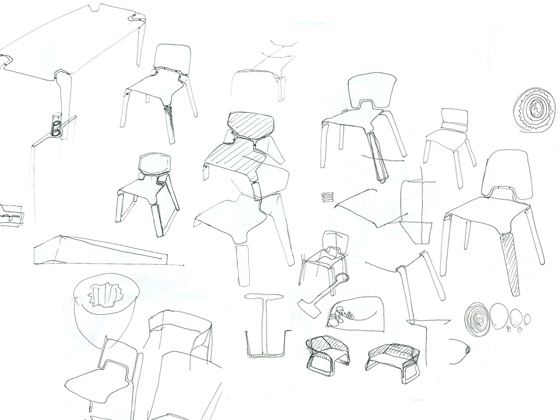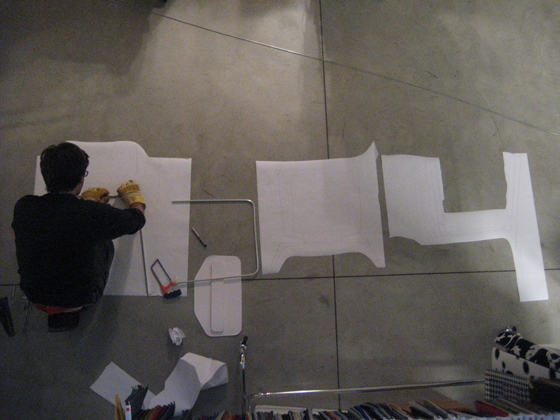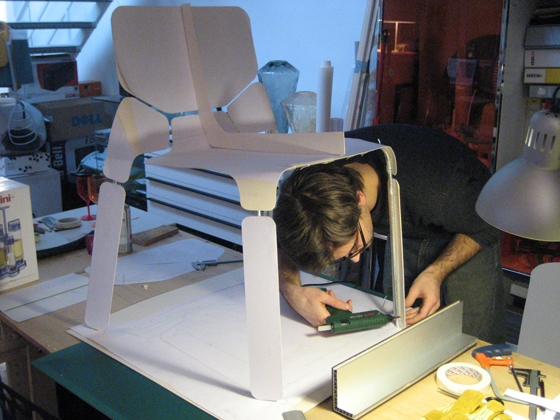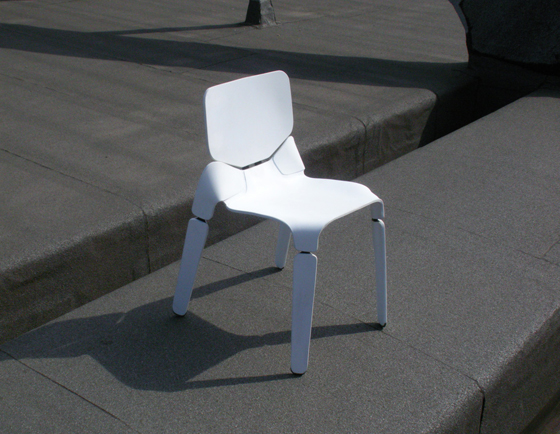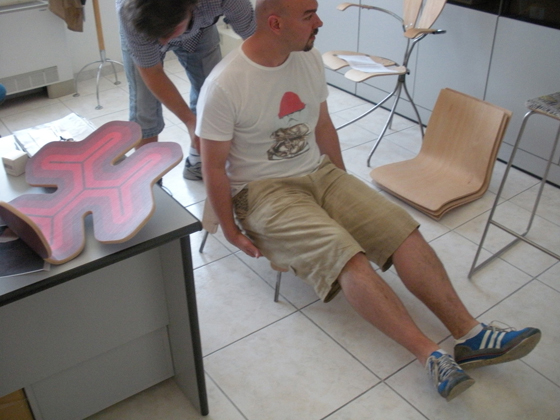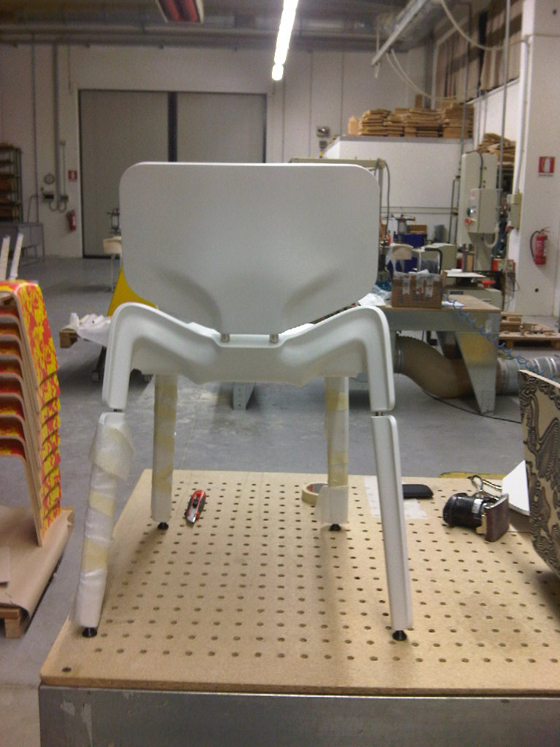Anatomy of a Chair
Texto por Simon Keane-Cowell
Zürich, Suiza
16.03.10
Architonic dissects Luca Nichetto's striking new 'Robo' chair for Swedish manufacturer Offecct, examining the process beyond the product.
The uncanny. Freud used the term to describe the unsettling instance where something can be perceived simultaneously as familiar and somewhat strange or alien. (The original German term for uncanny is 'unheimlich', literally meaning 'unhomely'.) There's more than a little sense of the uncanny about Italian product designer Luca Nichetto's new chair design, 'Robo', which displays something approaching an archetypal chair form, but at the same time subverts this very form though its insect-like, disjointed aesthetic. This is a piece of furniture that invites and unnerves in equal measure.
Luca Nichetto's 'Robo' chair for Swedish manufacturer Offecct, launched at the 2010 Stockholm Furniture Fair; photo credit PETERFOTOGRAF
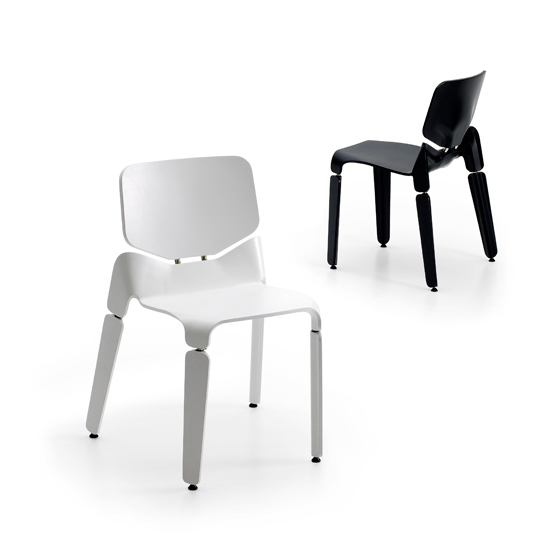
Luca Nichetto's 'Robo' chair for Swedish manufacturer Offecct, launched at the 2010 Stockholm Furniture Fair; photo credit PETERFOTOGRAF
×Produced by Swedish manufacturer Offecct and launched at this year's Stockholm Furniture Fair to great interest, 'Robo' cleverly foregrounds its very constructedness. Having taken a popular-cultural cue from Icelandic singer Björk's 1999 Chris Cunningham-directed video 'All is Full of Love', in which the music artist features as a cyborg – part human, part robot – Nichetto has created an object with a structure that gestures visually towards its own deconstruction.
A key part of the chair's design brief was to make it self-assembly, meaning a reduction in shipping volume with its obvious financial and environmental benefits; photo credit PETERFOTOGRAF
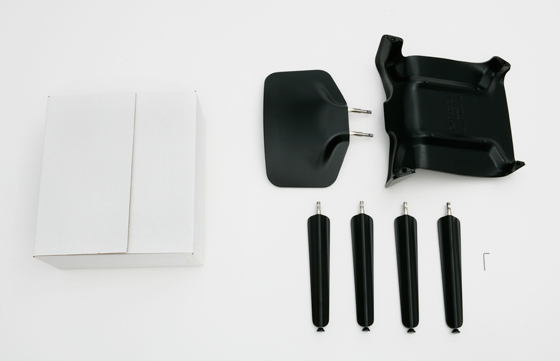
A key part of the chair's design brief was to make it self-assembly, meaning a reduction in shipping volume with its obvious financial and environmental benefits; photo credit PETERFOTOGRAF
×It's perhaps the nature of products, helped in no small way by the spectacular manner in which they are presented at design fairs and mediated through images in glossy design magazines, that they should be fetished as finished articles, often with little thought of how they came into being. 'For me, it's not only the look of the 'Robo' chair that's important,' Nichetto tells Architonic. 'The process for me was a project. If people look at the chair without discovering what lies behind it, then my work is not perfect.'
Initial sketches for the 'Robo' chair by Luca Nichetto
Offecct commissioned Nichetto to design a chair for the contract market that would also work in the home. The designer already had a working relationship with the Swedish brand, having previously designed a bench for them. The piece never reached production, but the project was to have a direct influence on the development of 'Robo'. As Nichetto explains: 'The bench was fantastic. Offecct created many prototypes. But the volume of the object was big, meaning the shipment wasn't eco-friendly. I learned that it's not only important to design a good product, but also to think about how the product is shipped and received.'
Image from prototype phase of the 'Robo' chair project; photo credit Nichetto&Partners
And think Nichetto did. 'Robo' boasts, as Offect's marketing blurb puts it, 'an assembly that can be compared to that of a Meccano set. When shipped, the disassembled components of the chair fit in a box measuring only 50 x 50 x 20cm.' Or, as the Italian designer himself says rather charmingly: 'There's not much free air when shipping.'
Image from prototype phase of the 'Robo' chair project; photo credit Nichetto&Partners
This knocked-down approach to designing a chair, one which celebrates visually every component that goes to make up the whole, is only one of the environmental smarts of this particular project. In terms of materials, 'Robo' is fabricated from recyclable plywood and compressed acrylic felt (made from recycled plastic bottles and applied as a layer on top of the plywood), which are sandwiched around metal elements, creating the object's basic components: legs, seat and back. The glue used in the process is, of course, an environmentally friendly one.
Image from prototype phase of the 'Robo' chair project; photo credit Nichetto&Partners
The process of moulding the materials together was completely new and Nichetto is deservedly proud of this innovation. Having tried to find a supplier in Scandinavia who was able to achieve this, the designer ended up working with a company in his homeland, very close to his studio. 'It took us a year to really understand the process,' says Nichetto. Three months before Stockholm, I put the final prototype in my luggage...'
Image from prototype phase of the 'Robo' chair project; photo credit Nichetto&Partners
The whole 'Robo' project took significantly longer, however: two and half years from start to finish. For Nichetto, this was time very well spent, and, in fact, quite fast. ' When we started, I thought we would need more time, because I didn't know the process at all. It was all new.'
Image from prototype phase of the 'Robo' chair project; photo credit Nichetto&Partners
Having been given what he regards as a great opportunity by manufacturer Offecct (which he describes as a 'school for many things') to learn how to make the minimisation of a design project's environmental impact an essential and non-negotiable part of its brief, Nichetto has a touch of the zeal of the convert about him. 'Now when I start to work on a new product here in Italy,' he tells Architonic, 'I take my experience with Offecct of developing a product in an eco-friendly way and try to transfer this to my projects for Italian clients. I think this is for me and my future a very good method of working. Taking know-how from one country to another. This is, of course, globalisation, but also it's also the future if you want to create good design.'
Nichetto for international design ambassador, possibly?
Luca Nichetto's 'Robo' chair makes a visual virtue of its clearly expressed individual components; photo credit PETERFOTOGRAF
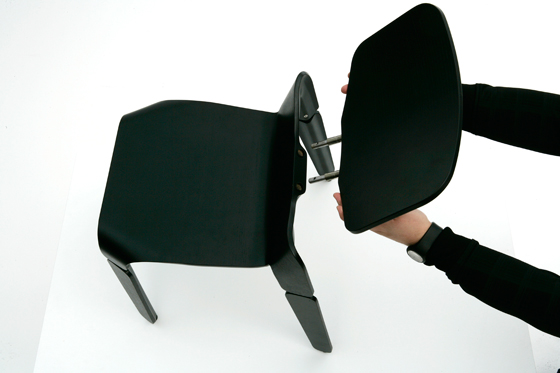
Luca Nichetto's 'Robo' chair makes a visual virtue of its clearly expressed individual components; photo credit PETERFOTOGRAF
×

